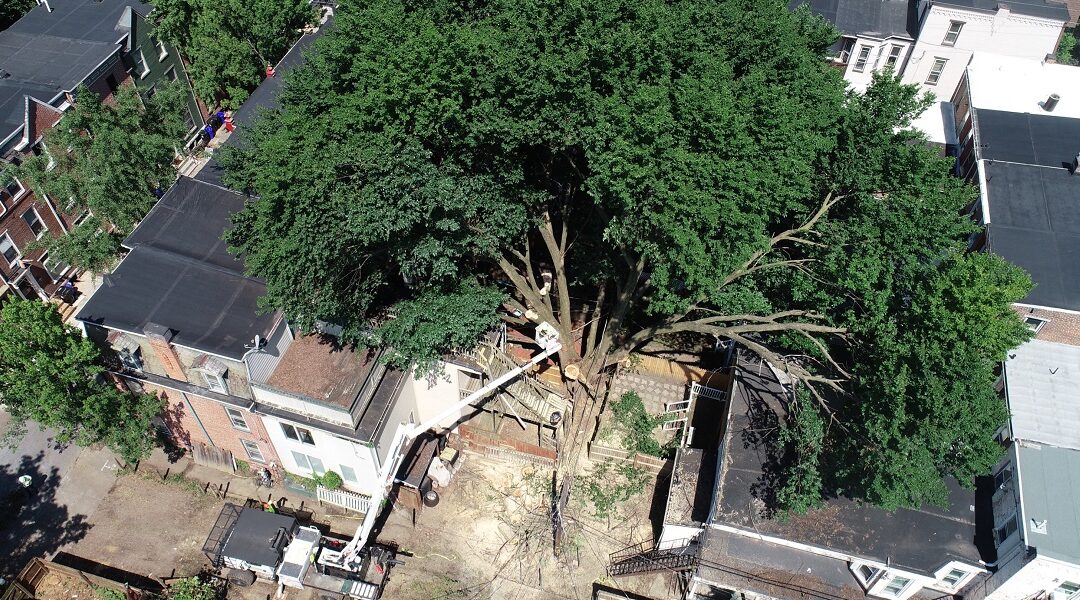
Sep 2, 2022 | Reliability
It took a lot of strategic planning, hard work and the use of a 100-ton crane, but residents on one city block in Harrisburg can rest easier now that a huge tree that had become a safety hazard is gone.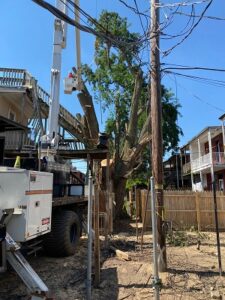
We partnered with the City of Harrisburg and tree-removal experts to safely remove the gargantuan Elm, with roots spanning multiple properties and branches entangled in our power lines.
Once customers began calling with safety concerns, we knew we had to act before the tree caused an electrical fire or outages—or fell and hurt someone or damaged property.
“Tree maintenance on private property generally isn’t our responsibility,” said Regional Affairs Director Maggie Sheely. “But, when it comes to safety, we don’t compromise. We step up to do the right thing and keep our customers safe.”
Equipped with bucket trucks and generators, our crews were on site for four days, untangling the large tree from our lines with precision.
It was a TREE-mendous effort by all that created a safer environment and ensured more reliable service for some Harrisburg residents.
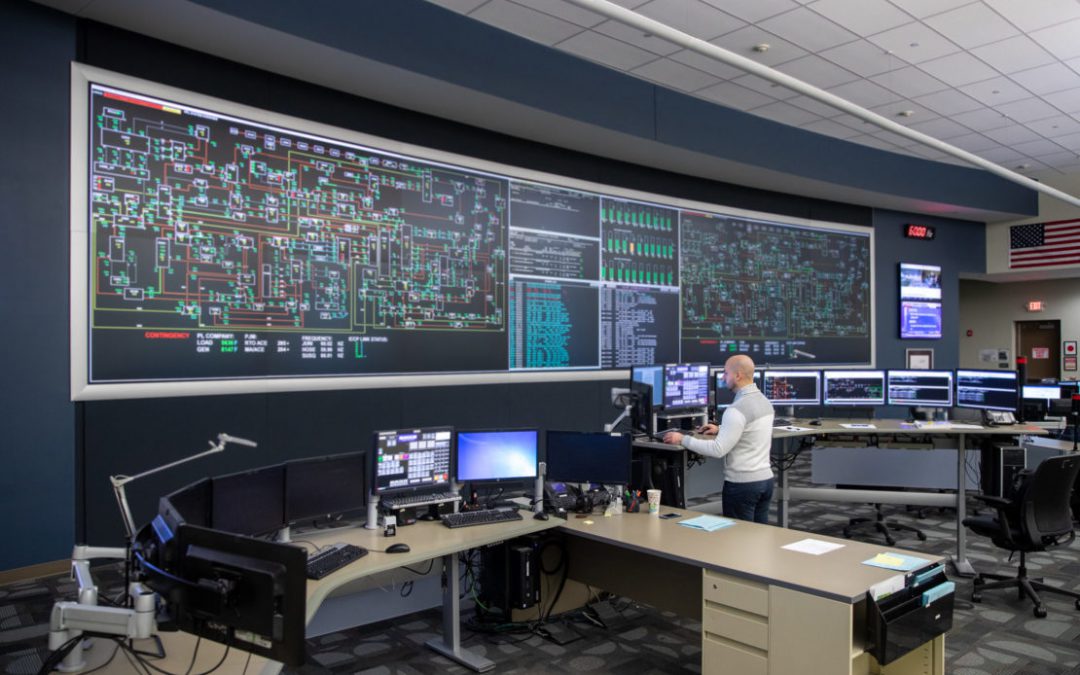
Oct 29, 2021 | Reliability
We work every day to keep your electric bills as low as possible. But paying any bill — especially these days — isn’t fun. That’s why we want you to know what you get for your energy dollar.
Let’s start with one of the most important aspects of our jobs: providing reliable electric service. Our electric grid consists of thousands of miles of poles and wires that deliver electricity to your homes, as well as the state-of-the-art technologies that manage them. Every year, we invest in systems and activities to keep our grid on the leading edge so we can keep your lights on.
Here are just three examples of the many reliability initiatives underway throughout our 29-county service territory.
Vegetation Management
Fallen tree branches are the number one cause of storm-related power outages. That’s why our crews work hard to identify, trim and remove trees and tree limbs before they cause problems. Our maintenance program is designed so we can trim the right trees at the right times to prevent outages. We use data to identify the areas that have the highest probability of tree-related damage and act accordingly.
Smart Grid Investments
Back in the day, when there was an outage on one of our lines, most customers on that damaged line lost power. Now, thanks to an impressive combination of automated sensors and switches, coupled with an advanced software system, our grid can reroute power automatically to limit the number of customers impacted by an outage. Plus, the system can shorten outage duration. That means an outage that once could have lasted hours becomes a momentary blip. You might have to reset your digital clocks, but you won’t have to break out your flashlights.
Line Monitoring
Every day, we proactively monitor the thousands of miles of lines that deliver electricity to our Pennsylvania customers. We’re looking for trouble spots, equipment damage and any other issues that could cause you to lose power. We rely on our dedicated crew to identify and report issues, but for some of our assets we also use unique methods, like camera-equipped drones, to keep an eye out for problems. Drones capture images of lines and transformers. They do thermal imaging to catch hotspots that can signal future problems. They also improve our vegetation management program by measuring the distance from trees to power lines, allowing us to schedule trimming before it’s too late.
This is just the tip of the iceberg. To stay up to date on our reliability investments, follow us on social media.
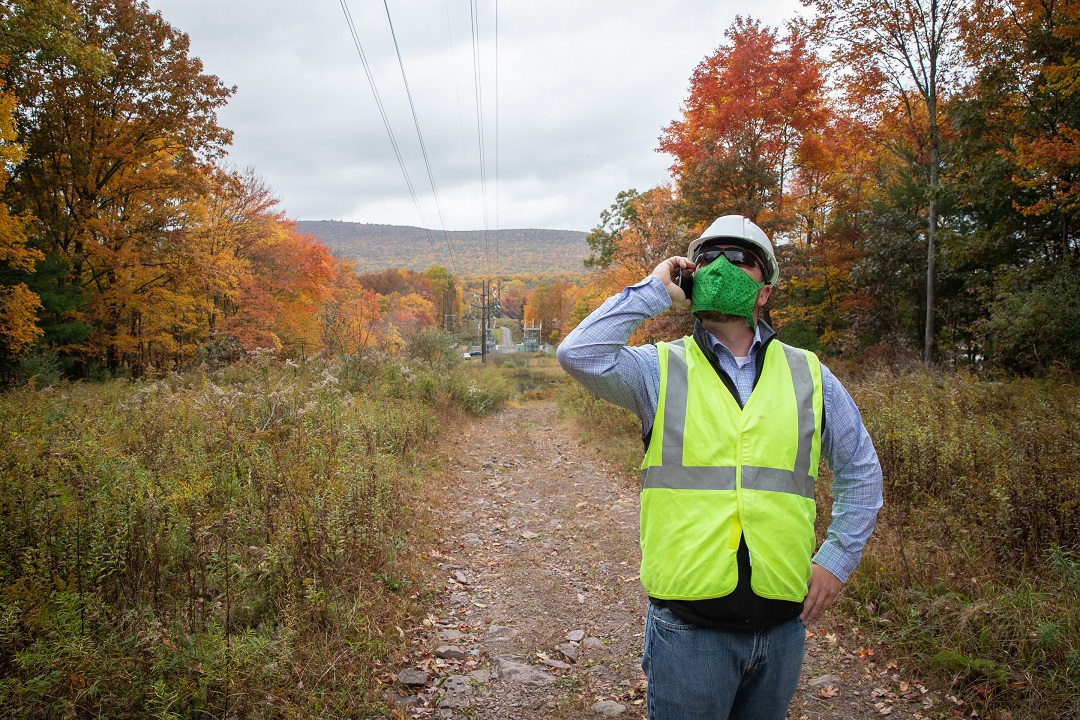
Jun 24, 2021 | Reliability
Trees are the number one cause of storm-related outages. That’s why we take a proactive approach to keeping lines clear.
Thanks to the combined efforts of our vegetation management program, in 2020, we reduced tree-related outages by 14 percent over the prior year.
Here’s how we do it:
Routine trimming
We trim trees across 33,000 miles of overhead power lines to reduce the risk of outages. We have an established time- and- condition based maintenance program to make sure we’re trimming trees at the right times. We also use data analytics and innovative technology to identify the areas with a higher probability of tree-caused outages.
Don’t attempt to trim or remove trees near our lines on your own. Our qualified line clearance tree trimmers have specialized training to work around our power lines. If you want to remove a tree growing within 10 feet of a power line, call us first.
Goodbye hazard trees
Imagine how difficult and dangerous it is when a large tree brings down power lines in a storm. Assessing the damage, clearing the area for safe repairs, and restoring power to those impacted by a downed line can take hours.
That’s why we proactively remove hazard trees that pose a threat of falling and damaging our lines with permission from the property owner. The removal of these trees in advance of a storm prevents significant damage, removes a safety risk for the public and our employees, and reduces the likelihood of power outages.
In addition to tree trimming, we install animal guards, inspect and maintain our lines and equipment, and continue to improve our smart grid technology to provide you with reliable service all throughout the year.
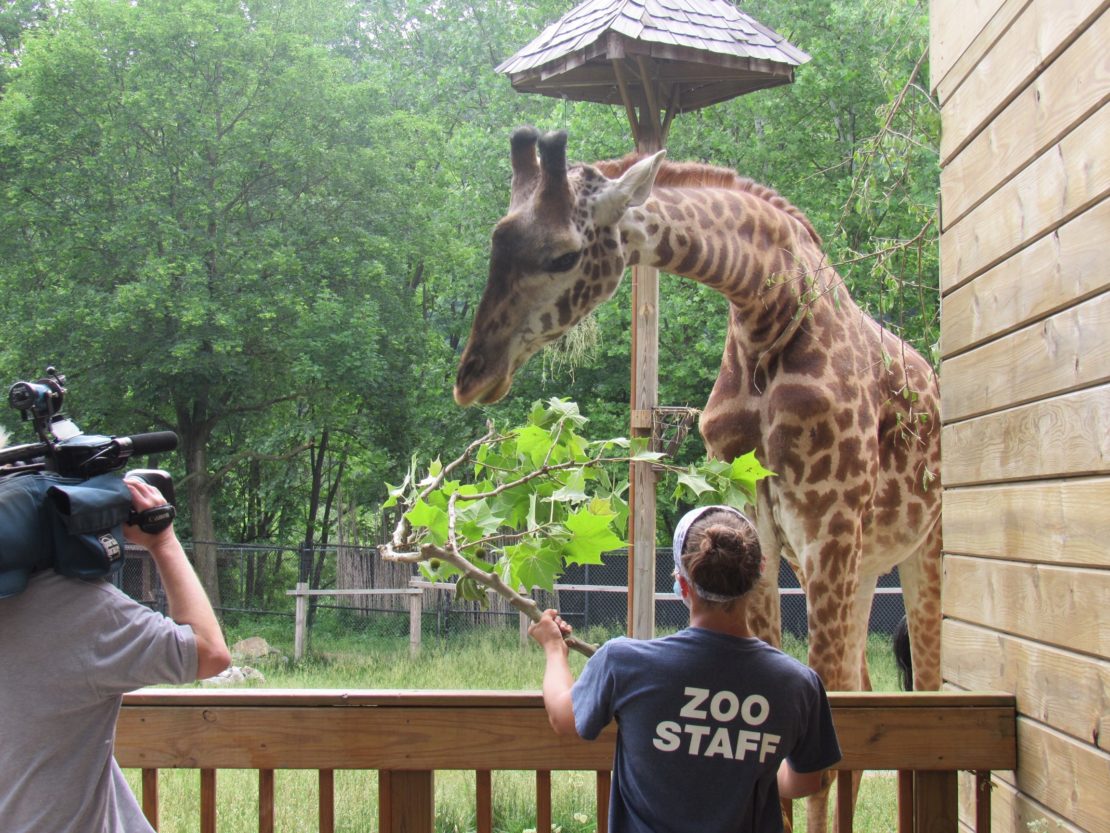
Jun 24, 2021 | Environment
Each and every year, we conduct tree trimming throughout our service territory to help maintain reliable service and prevent outages. While getting the customers the power they need is certainly our main focus, one of the unique benefits of successful tree trimming is feeding animals like Tatu, the giraffe, at the Lehigh Valley Zoo. 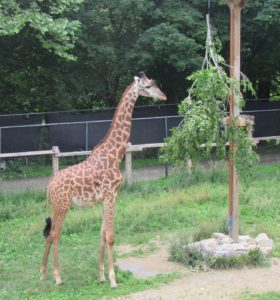
Instead of ending up in a chipper, the smaller branches and tree debris we collect through our vegetation management program are donated to help feed the animals. Tatu, and his other leaf-loving friends at the zoo, can enjoy this especially delicious fare that assists in keeping the animals’ digestive systems running smoothly.
Trees are the number one cause of storm-related power outages, which is why we have an established time-and-condition based maintenance program to make sure we’re trimming trees at the right time.
In 2020 alone, we reduced tree-related outages by 14 percent from the prior year. This work is essential to keeping the lights on and great for curbing Tatu’s appetite.






